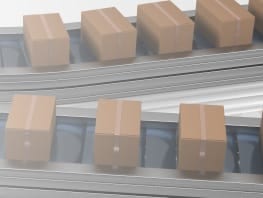Protective Packaging: Tips and Techniques from Assembly Experts

Packaging is one of the most important areas of the order fulfillment and shipping process.
No matter how efficiently an order is processed or how quickly it's delivered to the customer, if the product arrives damaged then the system has failed. Expensive returns and rework follow, creating waste that can be eliminated by ensuring that protective packaging is in place from the beginning.
Techniques to Ensure Protective Packaging
There are many options when it comes time to pack products up and ship them out, some more effective than others.
We use some of the following techniques to make sure that the products we ship are well protected in transit:
- Overwrapping - a fully enclosed wrap, using heat-sealed film or paper around one or more products. You may be more familiar with this technique as ‘gift wrapping'. It can also be called 'tuck and fold' or 'diamond-end fold' wrapping.
- Stretch Banding - the application of various different heat-sealed materials, banded around one or many products to create a bundle. By using printed film, product information can also be shown on the package, offering improved handling and verification for different orders.
- Casepacking - places multiple products or bundles in a shipping carton that is then closed with hot-melt or adhesive tape.
- Green Packing - using environmentally friendly materials such as new recycled corrugated boxes, crumpled craft paper, and post-consumer recycled plastic products (air bags, etc.) as default packing materials.
For smaller packaging jobs that you want to handle one at a time, we put together these best practice packaging tips just before the holidays, all of which apply to standard shipments as much as the Christmas rush!
Achieve Outstanding Assembly
In the same breath as discussing packaging, it's important to consider the complexity of your assembly needs.
Often it can be a big challenge for a business to get products assembled in a way that's both affordable and professional. For some clients, assembly work is all that we do and so we've honed in on the best ways to achieve outstanding assembly.
Consider the following questions before you decide how your assembly process will be set up:
- What kind of presentation do you need for the products to be shipped?
- How many products will be in the same package? Should they be bundled together or separated?
- How will you identify and track what's in the package?
- How big is the order and what resources will it require to assemble?
One look at the video below shows how some organization and a robust process can combine to achieve outstanding assembly. Capacity CEO Jeff Kaiden walks us through the preparation of a gift box set for a client, including the assembly, wrapping, labeling and quality control checks. While these considerations come as standard for us, they can be a bigger burden for business owners unfamiliar with what needs to be done.
If you have questions about your packaging and assembly process, we're happy to help!